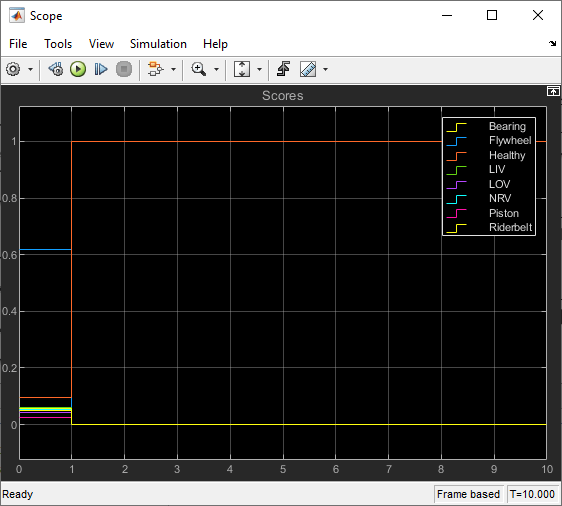Wavelet Scattering
库:
DSP System Toolbox /
Feature Extractors
描述
Wavelet Scattering 模块创建了一个框架,用于在 Simulink® 环境中实现小波时间散射。使用此模块从实数值数据中推导低方差特征,然后在机器学习和深度学习应用中使用这些特征。该模块使用预定义的小波滤波器来计算尺度图,并对尺度图应用平均值滤波器以进行特征提取。有关详细信息,请参阅Wavelet Scattering (Wavelet Toolbox)。要在 MATLAB® 中执行小波散射,请使用 waveletScattering (Wavelet Toolbox) 函数。
Wavelet Scattering 模块需要 Wavelet Toolbox™。
示例
端口
输入
输出
参数
模块特性
数据类型 |
|
直接馈通 |
|
多维信号 |
|
可变大小信号 |
|
过零检测 |
|
参考
[1] Andén, Joakim, and Stéphane Mallat. “Deep Scattering Spectrum.” IEEE Transactions on Signal Processing 62, no. 16 (August 2014): 4114–28. https://doi.org/10.1109/TSP.2014.2326991.
[2] Mallat, Stéphane. “Group Invariant Scattering.” Communications on Pure and Applied Mathematics 65, no. 10 (October 2012): 1331–98. https://doi.org/10.1002/cpa.21413.
扩展功能
版本历史记录
在 R2022b 中推出
另请参阅
函数
waveletScattering(Wavelet Toolbox)
主题
- Wavelet Scattering (Wavelet Toolbox)
- Fault Detection Using Wavelet Scattering and Recurrent Deep Networks (Wavelet Toolbox)
